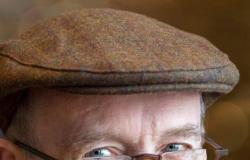A century ago Gustav Klimt starred in the avant-garde revolution, this Wednesday he stars in the speculation of the art market. The canvas Portrait of Miss Lieser (1917) has sold for 30 million euros at the Vienna auction house im Kinsky, far surpassing the most valued piece at an Austrian auction to date, The eternal dilemma of humanity: the choice between virtue and vice, by the baroque painter Frans Francken the Younger, sold in 2010 for seven million. Last June the painting Lady with fanthe last portrait that Klimt painted before his death in 1918, was sold for 99.2 million euros at Sotheby’s in London and became the most expensive work auctioned in Europe.
To the millionaire artistic and commercial value of Klimt’s painting is added that of mystery and drama. The painting, which is preserved intact, emerged from the shadows in January without anyone expecting it. Until then, experts only knew of its existence from a black and white photograph from the archive of an exhibition at the Neue Galerie in Vienna in 1925, in which it was not exhibited in the end. It is unknown what happened to the work between that date and the 1960s. There is no evidence that it was seized or confiscated (stolen) by the Nazis after the annexation of Austria to the Third Reich, but its possible owner, Henriette Lilly Lieser was deported and murdered in the Riga ghetto in 1942 (other sources record that she was gassed in Auschwitz in 1943, the outcome is uncertain). Lilly Lieser was a prominent patron of the avant-garde, a sensitive Jewish intellectual who mentored composers Arnold Schönberg and Alban Berg in their twelve-tone revolution. However, a good part of the family’s properties were quickly arianized (preempted).
After more than a year of investigation, the experts at the im Kinsky auction house have not been able to clarify whether Klimt’s client was Lilly Lieser or her brother-in-law, the industrialist Adolf Lieser, because they cannot conclude whether the young woman portrayed is her or , Helene Lieser or Margarethe Constance Lieser, their daughters. Lilly Lieser had another daughter, but her Danube gray eyes excluded her as a model. In this case Klimt painted hazel eyes, and in a commission of this rank, in which he prepared up to 25 preliminary studies and received the model nine times in his studio between April and May 1917, this type of license was not contemplated. artistic.
However, the negative of the photograph was kept in a sealed envelope addressed by Lilly Lieser. The local newspaper’s investigation Der Standard He pointed out that during the World War the canvas came into the hands of a certain Adolf Hagenauer, an obscure shopkeeper who had been a militant of the Nazi Party since 1933, when being a Nazi was still prohibited in Austria, who was able to take advantage of Lilly Lieser’s fate. It can only be conjectured, not proven, that he got the canvas in exchange for food or protection, but Hagenauer knew, like all of Vienna, that Lilly was murdered.
In the absence of legal documents that certify the movements of this work, a Jewish family would have lost a klimt During World War II it prevented the new owners from making it public. “There is a void in those years and the whereabouts of the work is unprovable,” stated Ernst Ploil, co-founder of the auction house im Kinsky, bluntly, hours before the bidding, which took place at 5:30 p.m.
A year and a half ago, the current owner, a member of the third generation of the family that has inherited the painting since the sixties, presented the work on the first floor of the Palais Kinsky, where the auction house in Vienna, a palace, is based. proudly aristocratic palace from 1719 in an old town square of aristocratic palaces. Im Kinsky’s turnover is modest compared to the big firms in London and New York, but his choice was more than a geographical anecdote. The owner of klimt sought artistic and legal expertise in managing cases of looted art during the Nazi era.
The sale is part of a private restitution agreement between the current owner of the painting and the heirs of Klimt’s former clients, that is, Adolf Lieser or Lilly Lieser. “There is no evidence that the work was looted, stolen or illegally confiscated before or during World War II,” insists Ploil. “No test, But we had to cover all possibilities.”
The agreement with the owner was drawn up in anticipation of a purchase by an international collector and in the spirit of the 1998 Washington Principles on Nazi-confiscated art, which ensured that the country’s Federal Monuments Office issued a export permit.
The bid was announced in January. One of the first to hear the news of the appearance of Portrait of Miss Lieser, last June, was Markus Fellinger, curator of the Belvedere museum and an authority on Klimt. “I only knew it from the black and white photography of old catalogs raisonnés, it was a huge surprise,” he says. “The impression of seeing the original was greater than I expected. The painting is much more finished than he thought, the entire canvas is covered in bright colors and the dress with its flower pattern is beautiful in its simplicity. The face is finished in detail with astonishing precision.”
Klimt was unable to finish the portrait, which remained unsigned. He died of a stroke at the age of 55 and the painting was given to the Lieser family. It had been decades since the art market in Central Europe had shown a painting comparable in rarity and artistic value. The auction started from an initial estimate that ranged between 30 million and 50 euros. Seeing the result, it is clear that expectations exceeded the final result. Even more so when comparing the canvas with Klimt’s most expensive painting (its private sale exceeded 180 million dollars in 2013, about 168 million euros), Water Snakes II, stolen by the Nazis from the Jewish businesswoman Jenny Steiner, also a patron of the artistic movement. The Nazi filmmaker Gustav Ucicky, Klimt’s illegitimate son, had it hanging in the dining room of her house for years.
The work sold at im Kinsky was on display to the public until Sunday at the auction house. For now, for a few more days, it will remain accessible to everyone within the walls of the aristocratic palace.
All the culture that goes with you awaits you here.
Subscribe
Babelia
The literary news analyzed by the best critics in our weekly newsletter
RECEIVE IT






